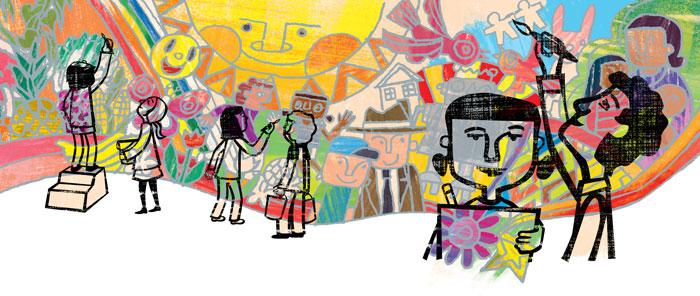By Sima Misra, Director of Teaching & Learning
Thirteen faculty and admin from each campus and each division serve on the committee to help bring the school closer to accomplishing two important goals:
- To build a scope and sequence for our anti-bias education curriculum at each level (ECC, K-2, 3-5, and MS).
- To build a shared understanding of cultural responsiveness in teaching practices.
It’s exciting to see how this committee’s collaboration, documentation, and planning have both short- and long-term impacts on student learning. For anti-bias curriculum, TBS uses the Social Justice Standards from Teaching Tolerance, which focus on building students’ understanding of identity, diversity, justice, and action in age-appropriate ways, early childhood through high school. Equity Committee teacher representatives went to their divisions and asked colleagues to document how they teach each of the standards, find gaps and redundancies, and identify resources to round out their curricula. We also want to ensure our curriculum is truly multicultural. On the January 2 Professional Development Day, the Equity Committee led the entire faculty in an exercise where they documented a matrix of many different multicultural areas (including gender, race/ethnicity, national origin, ability, and religion). We’re using this documentation as a starting point to do the following:
- Determine appropriate times for students to study differences.
- Create ways to infuse these into a variety of domains (cultural studies, literature, math, visual art, service learning, etc.)
- Identify areas where new lessons and resources are necessary.
This is big, important work, and it is exciting for faculty to learn about lessons colleagues are teaching, and share ideas to support each other’s teaching.
With a focus on our second goal of building a shared understanding of cultural responsiveness in teaching practices, the committee pored through research on cultural competency and cultural responsiveness. Culturally responsive teaching, as defined by the National Center for Culturally Responsive Educational Systems (NCCRESt.org), is “the valuation, consideration, and integration of individuals’ culture, language, heritage, and experiences leading to learning.”
The Equity Committee surveyed the faculty about their own culturally responsiveness and analyzed the results to determine strengths and challenges. We are in the process of using that analysis to set school-wide expectations. At all-staff meetings, committee representatives will be providing teachers opportunities to reflect on different aspects of culturally responsive teaching, to build a shared understanding of what this looks like, sounds like, and feels like, and explore how teachers could strengthen their cultural responsiveness at each grade level. Teachers are also reaching out to students (for example on our Student Council) to find out how teachers can be more welcoming of student ideas, traditions, and cultures.
There are many other important efforts at TBS around Equity & Inclusion this year, including board work, family affinity groups, the Ashoka changemaking team, as well as admin and faculty professional development. But the work by the Faculty Equity committee gets to the heart of all students’ experience, and promises to serve the students well as they navigate and as we say in our mission, “engage our changing world.”

